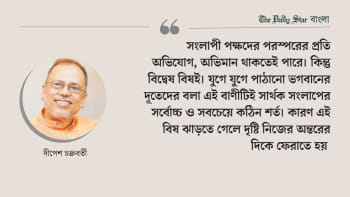Banda Islands - birth place of the Nutmeg

That little brown nut you grate into your meat curry or favorite sweet or drink, and which fills your kitchen with its heady, inviting aroma, is exported to the world out countries like Granada and Sri Lanka. But before it got to these exotic sounding places, the little nutmeg had its own fascinating history.
In seventeenth century Europe, the nutmeg was the most desired spice. It was supposed to have powerful curative properties; even a cure for the dreaded plague!
It was discovered in the seventeenth century, and found only to be growing on the rocky and windswept Banda Islands, part of the Indonesian archipelago. The tiny island of Run, in particular was famed for nutmeg.
The approach to these islands was made dangerous by treacherous reefs. Yet, they came from Europe because the nutmeg was worth its weight in gold. First, the Portuguese, then the Spanish, followed by the Dutch and the English, came in search of this fragrant spice. This led to bloody wars and upheavals between these naval powers, as well as with the local Bandanese. The final struggle over the islands was between the Dutch and the English.


The conclusion of this rivalry was finally possible when the Dutch agreed to allow the English to keep Manhattan islands in what is now the United States, in return of full control over the island of Run. The rest is history. Manhattan or New York became an economic powerhouse. The island of Run declined as a centre of trade in spices, partly because the English had taken and planted seedlings of nutmeg in South Asia and the Caribbean. Run and the Banda islands became lost in the tides of history. Today, Banda entices with its scenic beauty and awesome history.
The flowers of the nutmeg are white and scented, the fruit,– yellow and plump. Cutting it open reveals a lace- like membrane, which is the mace. The brown skinned nut nestles inside.
In Banda, the nutmeg trees grow under the shade of the giant Kenari trees. The nut of the Kenari itself tastes like almonds.
The Banda islands consist of Banda Besar, Banda Neira, Run, Ai, Hatta, Pisang and the volcano island Gunung Api, and the island of Manuku which is a nesting site for birds.


Travel to these islands is still lorded over by the weather. It is possible to cross by ferry from Ambon to Neira when the weather is calm during the non-monsoon season. Recently, air travel has been opened up just for a few days of the week.
As we approached the island of Neira, we were treated to the sight of dolphins jumping and frolicking in the water, followed by whales, several at a time, breaching and whooshing spurts of water as they passed. Sea birds, such as red footed and the brown Boobies, swooped overhead.
The island of Neira is pretty, with narrow, neat lanes edged with small petite houses. The architecture is colonial, with beautiful bay windows, and wooden trellis work.
There are many grand colonial houses, even one with its own resident ghost. Also to be seen are impressive colonial VOC forts, still intact and forbidding.
Along the roadway, vendors were selling food seasoned with the nutmeg.

Fish, fresh from the sea, was on the menu every day, prepared with Indonesian spices, and of course, nutmeg!
Overlooking Neira was the classic cone shaped volcano, steep on all sides. Those who climbed it felt it in their muscles for several days. We travelled to nearly all the surrounding islands by boat. The people were mainly fisher folk or nutmeg plantation owners.
The seas surrounding nearly all the islands abound in beautiful coral and marine life. That is Banda-- no longer famed for Nutmeg, but a paradise anyway.
By Valli de Vries
Photo: Valli de Vries


 For all latest news, follow The Daily Star's Google News channel.
For all latest news, follow The Daily Star's Google News channel. 



Comments